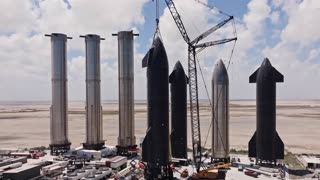Celebrating the Webb Space Telescope’s First Year of Science.
Celebrating the Webb Space Telescope’s first year of science, testing remote possibilities of a NASA humanoid robot, and a fleet of clean new rides for Artemis astronauts … a few of the stories to tell you about.
More About The Telescope:
The James Webb Space Telescope (Webb), a joint venture by NASA, the European Space Agency (ESA), and the Canadian Space Agency (CSA), is a large, space-based observatory touted as the premier observatory of the next decade. It is named after James E. Webb, a former NASA administrator who played an integral role in the Apollo moon-landing program.
The Webb Telescope
The Webb telescope, with a launch date set for late 2021, is the most ambitious and complex space science observatory ever constructed. It is nearly three times the size of the Hubble Space Telescope and will be positioned about 1.5 million kilometers from Earth.
Technical Specifications
The Webb telescope can hold a primary mirror that is 6.5 meters in diameter, which is significantly larger than Hubble's 2.4-meter mirror. Webb's larger mirror means it will have excellent resolution and will be able to see faint stars and galaxy formations.
The telescope is equipped with a sunshield the size of a tennis court, which will keep its mirror and four science instruments below 50 Kelvin. This sunshield is made of special material that reflects the sun's light away from the telescope.
Webb is designed to observe the infrared part of the spectrum, which allows it to see through dust clouds where stars and planetary systems are born. It will also be able to see the very first galaxies that formed in the early universe.
Scientific Goals
The James Webb Space Telescope aims to solve mysteries in our solar system, look beyond to distant worlds around other stars, and probe the mysterious structures and origins of our universe and our place in it.
The telescope is designed to study various phases of the universe, including the formation of solar systems capable of supporting life on planets similar to Earth, as well as the evolution of our own solar system.
Webb’s instruments will also be used to detect light from the first stars and galaxies that formed after the Big Bang. This information will help us understand the formation and evolution of galaxies and the production of elements heavier than hydrogen by stars.
Challenges and Future
The telescope project has faced several challenges in terms of budget overruns and schedule delays. However, it is now on track for its upcoming launch. Once operational, the Webb telescope will be the world's most powerful space science observatory, serving thousands of astronomers worldwide for a planned mission lifetime of more than 10 years.
Conclusion
The James Webb Space Telescope represents an unprecedented leap forward in our ability to understand the universe. With its advanced technology and ambitious scientific goals, it holds immense potential to transform our understanding of the cosmos, from the earliest galaxies to our own solar system. The global scientific community eagerly anticipates the valuable insights that this groundbreaking observatory is expected to yield.
Quality Webb Telescope Products & Gift Ideas Available Here! https://amzn.to/45uQ3j4
Credit: NASA
-
 1:13
1:13
NASA Videos Plus
7 months agoStarship Preparing for Second Flight Test!
1.1K3 -
 1:46:50
1:46:50
Glenn Greenwald
6 hours agoComedian and Political Analyst Dave Smith on Uniparty Politics, Free Speech Since October 7th, and Libertarianism | SYSTEM UPDATE #287
54.4K154 -
 2:00:26
2:00:26
Roseanne Barr
22 hours agoDanger Close with Patrick Byrne Part 1 | The Roseanne Barr Podcast #53
78.6K92 -
 59:25
59:25
RealitySurvival
3 hours agoGlobal Prepper SITREP - Look out! Death & Destruction Incoming?
16.7K5 -
 1:13:51
1:13:51
Edge of Wonder
8 hours agoCIA Remote Viewed Jupiter, New Spider-Man Mandela Effect & Weird News
33.5K14 -
 1:14:57
1:14:57
vivafrei
4 hours agoSCOTUS Leaves Immunity Hanging! Rebel News SHOCKS Canadian PMs? Trump vs. Nipple Judge & MORE!
41.8K51 -
 1:46:14
1:46:14
Robert Gouveia
7 hours agoJack Smith GRILLED; Bragg's ELECTION Lawsuit; Bannon's EMERGENCY Appeal
40.7K10 -
 2:21:58
2:21:58
WeAreChange
8 hours agoTrump To Blow The Lid Off JFK COVERUP?! He Names THE AGENCY!
78.6K69 -
 22:36
22:36
Lauren Chen
7 hours agoIn Defense Of The Male Gaze? Women & The Pursuit Of Beauty
41.2K40 -
 1:41:29
1:41:29
2 MIKES LIVE
7 hours ago2 MIKES LIVE #81 OPEN MIKE FRIDAY!
23.8K4